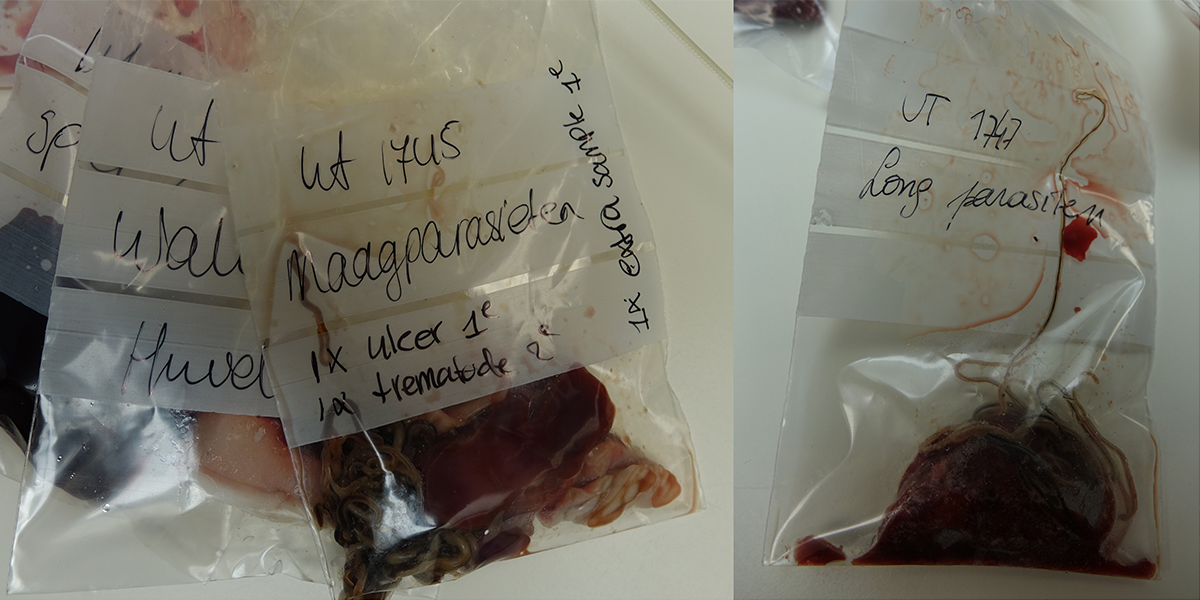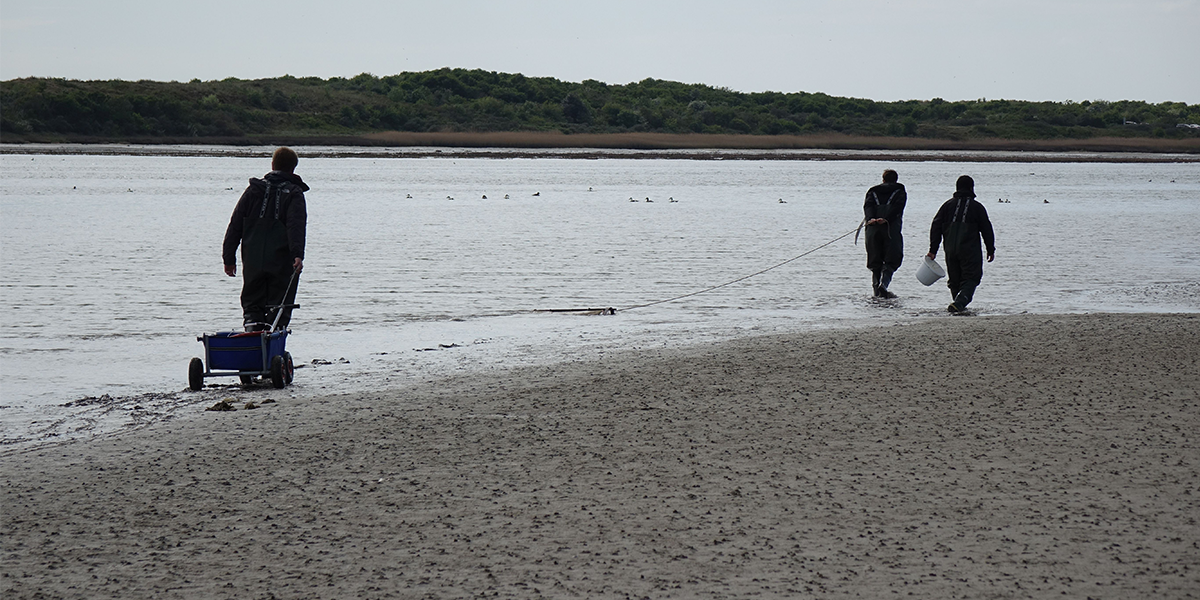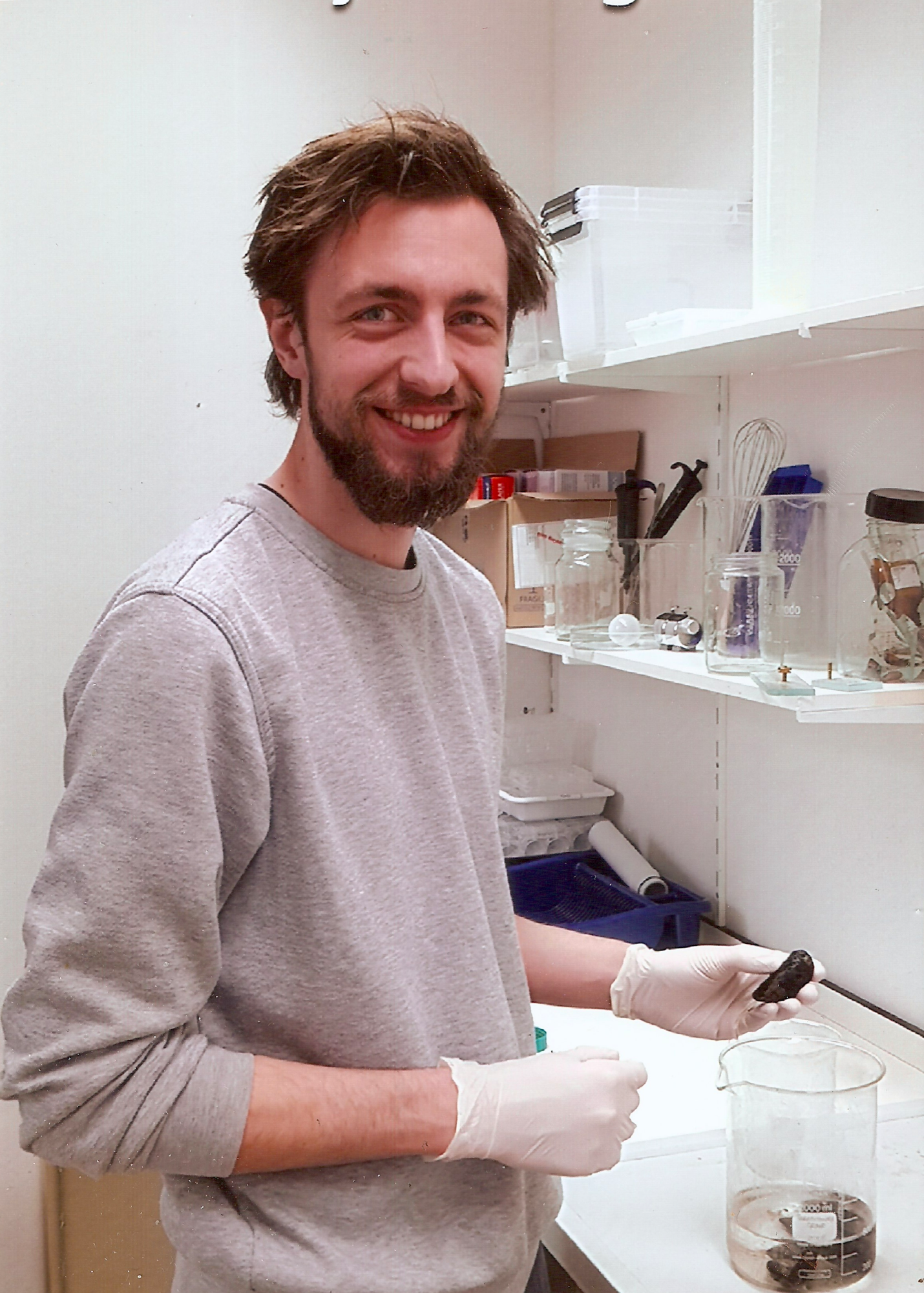Marine parasites secretly nibble from their hosts
The marine researchers studied the parasitic copepod Mytilicola orientalis that lives inside the gut of the Pacific oyster (Magallana gigas). Living in the gut, the copepod was thought to only consume its host’s food. First author Philip Riekenberg, marine isotope ecologist at the NIOZ Royal Netherlands Institute for Sea Research: “The new method proves that the copepod also consumes the body tissue of the filter feeding oyster itself.”
Find out who’s eating who
Conventional nitrogen isotope analysis reveals an organism’s place in the food chain. It makes use of the ratio between two types of nitrogen atoms present in all plants and animals: the abundant N-14 and the rare N-15. Riekenberg: “Almost all of the nitrogen in nature is N-14. Less than 0.4 percent is of the N-15 type. However, N-15 is slightly heavier than N-14 and thus is processed a tiny bit slower. With each step up in the food chain, some more N-15 is left behind in an animal’s body. Consequently, the body tissue of consumers or predators contains slightly more N-15 relative to N-14 than their food or prey. These differences accumulate and allow us to track who is eating who within the environment.”

Amino acids are key
However, with this conventional isotope method, parasite feeding relationships could not be clarified, showing varying differences between host and parasite for the nitrogen isotope value. Riekenberg and his colleagues decided to apply a novel method: they looked at the nitrogen contained in individual amino acids, the building blocks of proteins from which living tissues are built up. There are two types of amino acids: trophic amino acids that are heavily modified by consumers as they are metabolized and increase in isotope value, and source amino acids that are used with minimal metabolic modifications and better retain the isotope value of the consumer’s diet.
“The nitrogen isotope values of the underlying nitrogen source supporting an ecosystem can vary quite a lot due to microbial activity for instance, which can make feeding relationships difficult to identify using only conventional isotope analysis”, says Riekenberg. “Are high isotope values an indication of a level in the food chain or do they reflect a high nitrogen isotope value of the nitrogen source from the environment that the host is living in? By examining the difference between trophic and source amino acids, we now see that this difference is bigger in parasites than in the host tissue, indicating the parasite is using host tissue. The parasitic copepod in Pacific oysters, for example, turns out to be half a trophic level higher in the food chain than its host when the source amino acid nitrogen isotope value is accounted for, meaning that it consumes food from the intestines as well as tissue from the host itself.”
Properly place parasites in food webs
The marine scientists found similar trophic shifts for two types of nematode parasites in the stomach and lung of harbour porpoises, and an even higher trophic shift for an ear nematode. Additionally, analysis of a parasitic barnacle infecting green crab confirmed direct uptake of host tissue by the parasite. Both green crab and harbour porpoise are hosts from higher in the food chain than oysters, reflecting wide coverage of the possible parasite-host relationships present in ecosystems. Riekenberg is curious to find out the parasite-host relationships of even more marine species. “In the next two years, we will be using the new method to further identify how parasites affect nutrition and the physiology of their hosts, and how these impacts are represented within the isotope values of wild populations. Ultimately, the goal is to properly place parasites within food webs to better understand the connections between animals in their environments.”

Publication
Philip Riekenberg*, Tijs Joling*, Lonneke L. IJsseldijk, Andreas M. Waser*, Marcel van der Meer*, and David W. Thieltges*
Stable nitrogen isotope analysis of amino acids as a new tool to clarify complex parasite-host interactions within marine food webs
Oikos, 19 August 2021, http://doi.org/10.1111/oik.08450
